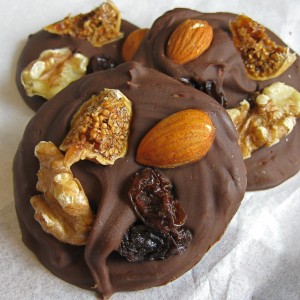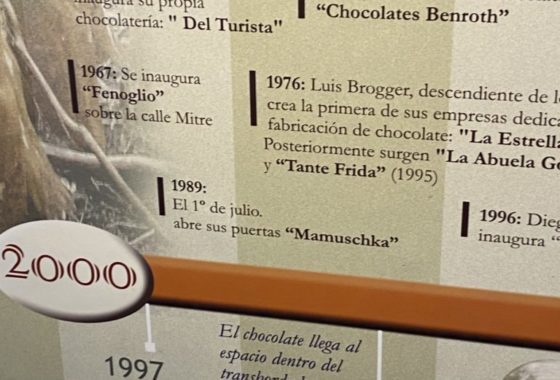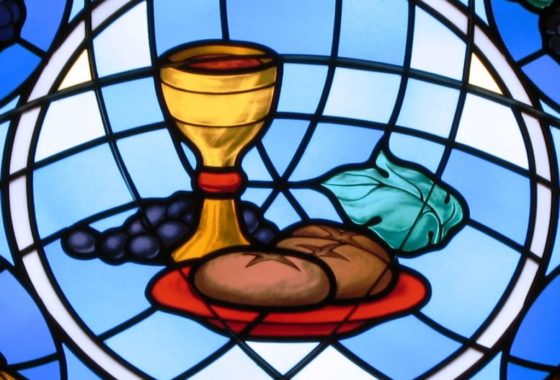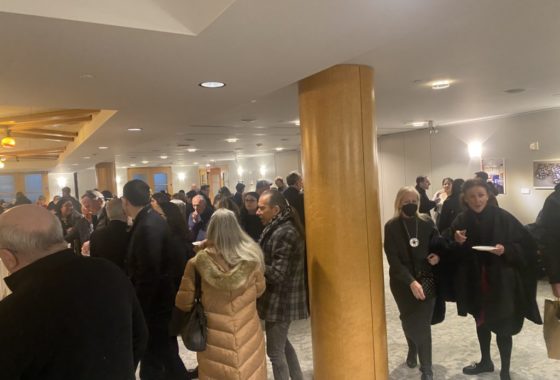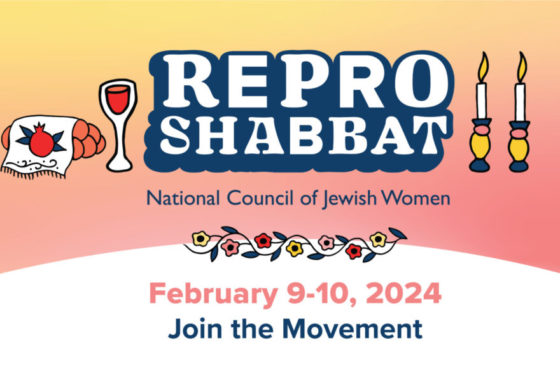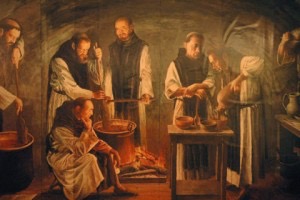
Fathering Chocolate
Fathers, Dominicans that is, helped bridge the New World’s chocolate to the Old World. In 1544 Padres tantalized the Spanish court with chocolate prepared and presented by a Kekchi Maya delegation of New World natives. Fatherly faith indeed aided in spreading chocolate to new regions of the world, to new religious contexts, and to new appreciation.
As Europeans slowly acquired a taste for it, celebratory chocolate enhanced many Christian settings. Church leaders depended on chocolate for physical, economic, and spiritual sustenance. Eventually the chocolate appetites of sixteenth-and seventeenth-century Christian religious enrobed many members of the Church in the Old World. For them, chocolate became an instrument of adulation, an offering for the greater glory of God. In Spain, monks made chocolate, drank it in secret, and hoarded their supplies and recipes. The Cistercians at the monastery at Poblet in Spain designated a special room for chocolate drinking. Early chocolate adopter Alphonse de Richelieu (b. 1585), cardinal of Paris, first tasted chocolate, when his protégé Cardinal Mazarin brought a personal chocolate maker with him from Italy. In 1634 Mexican Jesuits were shipping chocolate to their brothers in Rome by way of Seville. For his submission to a poetry contest honoring the seventh birthday of King Charles II, a Carmelite friar referred to chocolate as “that inspirational Ambrosia.” Jesuit Father Roberti treated himself to a drink of what he called the “Mexican nectar” at his morning meal. He also sought inspiration from a bowl of chocolate when writing.
Back in the New World chocolate provided good road food as the church extended its mission to California along the El Camino Real of twenty-one missions. When Franciscan Father Junípero Serra left Spain for his duties in the New World, he nestled chocolate in his personal belongings. Storms required his ship to make port at Puerto Rico and a local mission there provided sustenance in the form of chocolate. Serra reported: “For eighteen days we ate better than in any convent, all drinking chocolate every day.”
We honor these fathers, actually all fathers, whether religious or not, with chocolate.
This has been cross posted from the Huffington Post.
Recipe for Mendiants:
Many fine chocolatiers today make delicacies called mendiants. These immortalize the mendicant (beggar) orders–Augustinians, Carmelites, Dominicans, and Franciscans–those that serve the poor and rely only on donations for support. Each nut and dried fruit in the mendiant symbolizes the color of the respective monastic robes: raisins for Dominicans, hazelnuts for Augustinians, dried figs for Franciscans, and almonds for Carmelites.
Ingredients:
• 4 ounces dark or bittersweet chocolate, broken into pieces
• 1⁄4 cup cocoa nibs, almonds, or hazelnuts
• 1⁄4 cup candied ginger
• 1⁄4 cup dried blueberries or raisins
• 1⁄4 cup candied orange peel
Instructions:
1. Line a baking sheet with waxed paper.
2. In a large heatproof bowl set over a pan of simmering water, stir the chocolate until melted.
3. Remove the chocolate from the heat.
4. Drop tablespoonfuls of chocolate onto the prepared baking sheet, using the back of the spoon to flatten into disks.
5. Place one of each of the four toppings onto each circle.
6. Work a few medallions at a time; they will harden as they cool.
7. Cool on the baking sheet until hardened.
8. Store in a cool place in a covered container.
Quantity:
About 20
Recent Posts
-
On the Chocolate Trail in Bariloche, Argentina
In March, Mark and I finally extended our chocolate trail explorations in celebration of our special anniversary to Bariloche…via Miami, Buenos Aires, Ushuaia, Antarctica, and Buenos Aires again. There were international flights, a cruise, a couple of domestic flights to get there. All of the travel was amazing, but Bariloche, sometimes called the chocolate capital
Read more › -
Sunday Yeast Polemics: On the Bread Trail
Leavened bread or not? While some of us may think of Passover, the question applied to Eucharistic bread and created significant division in the early Christian Church. The leavened bread for Sunday use was often baked at home by women. Over time, preferences shifted to clergy, church-produced, breads… and, the Eastern Orthodox Church preferred a
Read more › -
Sweet Treat: Chocolate and the Making of American Jews
You may wonder: how did chocolate help define American Jews? Through chocolate, we see that Jews were part of America since its earliest days. Well, since 1701 at least, Jews in the Colonies made part of their living through chocolate. Several Sephardim, leaders of their New York and Newport Jewish and secular communities, participated in
Read more › -
How About Some Uterus Challah?
When Logan Zinman Gerber felt enraged about the loss of reproductive rights in the U.S., she baked challah. Not any challah. She shaped it into a uterus. It wasn’t long after the birth of her daughter that Gerber, a longtime challah baker and staff member of the Religious Action Center of the Reform movement, considered
Read more ›
Some Previous Posts
(in alphabetical order)
- "Boston Chocolate Party" Q&As with Deborah Kalb
- 2022 Media for The "Boston Chocolate Party"
- A Manhattan synagogue explores the rich, surprising history of Jews and chocolate
- About Rabbi Deborah Prinz
- Baking Prayers into High Holiday Breads
- Boston Chocolate Party
- Digging into Biblical Breads
- Exhibit Opens! Sweet Treat! Chocolate & the Making of American Jews
- For the Easiest Hanukah Doughnuts Ever
- Forthcoming! On the Bread Trail
- Funny Faced Purim Pastries
- Good Riddance Chameitz or, The Polemics of Passover's Leaven
- How About Some Uterus Challah?
- Injera*
- Jewish Heritage Month: Baseball & Chocolate!
- Matzah - But, the Dough Did Rise!
- Plan a Choco-Hanukkah Party: 250th Anniversary Tea Party
- Prayers Into Breads
- To Shape Dough: A Trio of Techniques
Archives
2025
▾- All
2024
▾- January
- February
- March
- May
- July
- All
2023
▾- March
- April
- May
- June
- August
- November
- December
- All
2022
▾- February
- April
- November
- December
- All
2021
▾- March
- April
- October
- November
- All
2020
▾- April
- May
- June
- October
- December
- All
2019
▾- January
- February
- April
- May
- July
- August
- September
- October
- December
- All
2018
▾- February
- March
- April
- May
- July
- September
- October
- November
- December
- All
2017
▾- January
- February
- March
- July
- September
- October
- November
- December
- All
2016
▾- January
- February
- March
- May
- July
- August
- October
- November
- All
2015
▾- January
- February
- March
- May
- June
- July
- September
- November
- All
2014
▾- February
- April
- May
- June
- August
- September
- November
- All
2013
▾- March
- April
- May
- June
- July
- September
- November
- All
2012
▾- January
- February
- March
- April
- September
- October
- November
- December
- All
2011
▾- April
- July
- August
- October
- November
- All
2010
▾- January
- February
- April
- July
- August
- September
- October
- All
2009
▾- January
- June
- July
- August
- October
- All
2008
▾- August
- September
- October
- November
- All
2007
▾- January
- June
- July
- All
2006
▾- November
- December
- All
